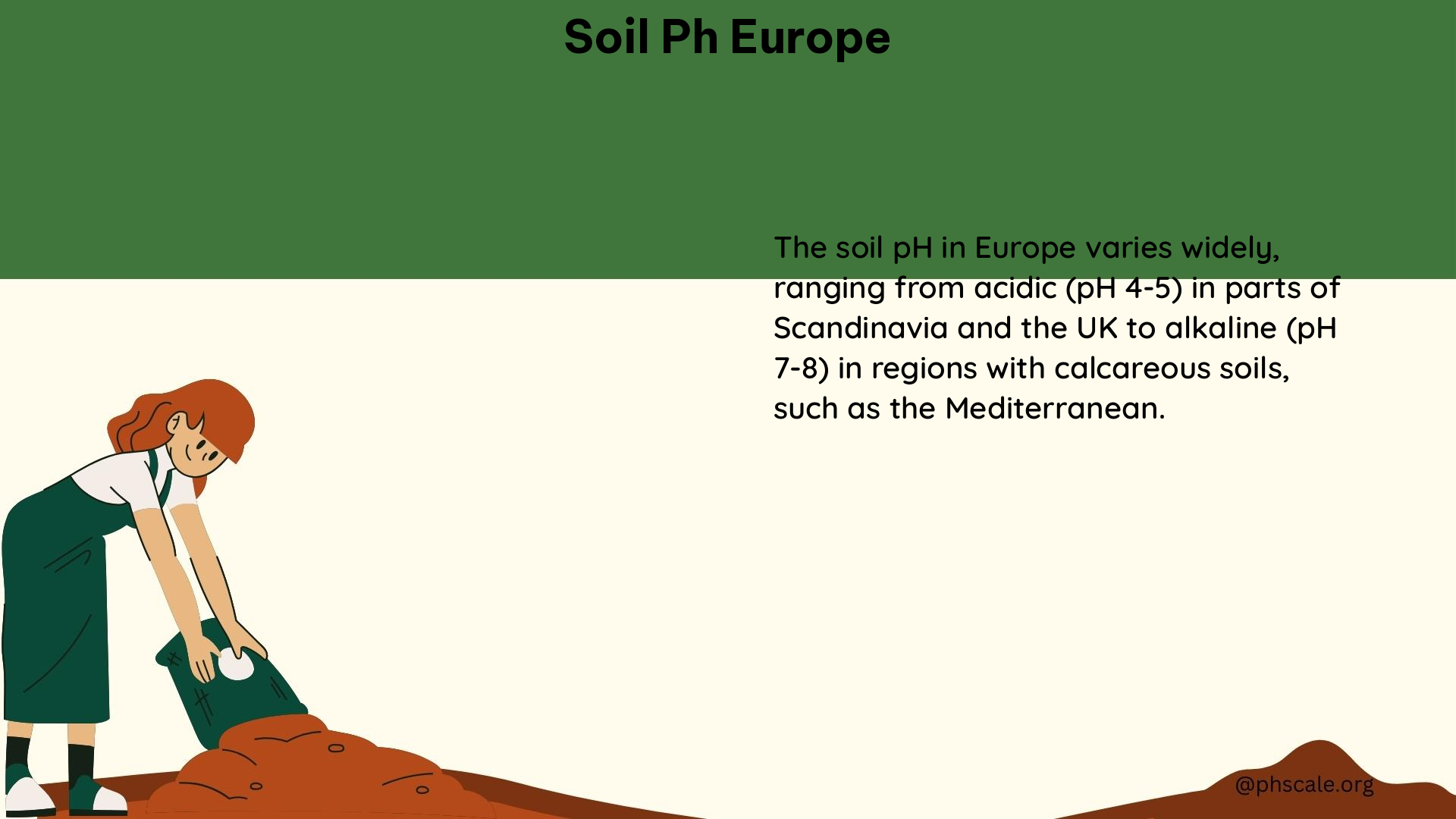Soil pH is a critical factor in determining the overall health and productivity of agricultural lands in Europe. The spatial distribution of soil pH across the continent varies significantly, with factors like land use, climate, and underlying geology playing a crucial role. In this comprehensive blog post, we’ll explore the key aspects of soil pH in Europe, including mapping efforts, contaminant concerns, and strategies for balancing soil pH.
Spatial Distribution of Soil pH in Europe
The median pH value for agricultural soils in Europe is 5.8, while for grazing land soils, it is 5.5. However, the pH range across the continent is quite diverse, spanning from 4.0 (very acidic) to 8.5 (very alkaline). This variation is largely influenced by the underlying geology, with soils developed on acid rock (granites, quartzite, sandstones) having lower pH values, and those with calcareous sediments and basic rocks exhibiting higher pH values.
Land use patterns and climatic differences also significantly impact the distribution of soil pH in Europe. Agricultural and grazing lands often have different pH profiles compared to natural habitats, reflecting the influence of human activities and management practices.
Mapping Soil pH in Europe

Efforts to map the spatial distribution of soil pH in Europe have been undertaken using various data sources and methodologies. The LUCAS 2015 TOPSOIL data has been used to create a comprehensive map of soil pH across the continent using random forest kriging (RFK). The GEMAS project has also provided valuable insights into the differences between agricultural and grazing land soils, while the European Soil Data Centre (ESDAC) has developed a quantitative map of estimated soil pH values using a geo-statistical framework based on Regression-Kriging.
These mapping efforts have revealed the complex and heterogeneous nature of soil pH in Europe, highlighting the need for targeted management strategies to address the specific challenges faced in different regions.
Contaminants and Chemicals in European Soils
In addition to the spatial distribution of soil pH, the geochemical composition of European agricultural soils is also a concern. Analyses have revealed variations in the bioavailability, weathering, and anthropogenic anomalies of mobile metal ions. Furthermore, soil pollution is a significant issue, with various contaminants and chemicals affecting soil health and fertility.
Understanding the presence and distribution of these contaminants is crucial for developing effective soil management strategies and ensuring the long-term sustainability of European agriculture.
Balancing Soil pH
The optimal pH range for productive agricultural land in Europe is between 5.5 and 7.0. Maintaining this balance is essential for ensuring the availability of essential nutrients, promoting healthy plant growth, and supporting a diverse soil microbiome.
For DIY users, there are several home remedies that can be used to balance soil pH. Adding organic matter, such as compost or manure, can help improve soil structure and buffer pH changes. Lime can be used to raise the pH of acidic soils, while elemental sulfur or peat moss can be used to lower the pH of alkaline soils.
It’s important to note that soil pH management has been a long-standing concern in European agriculture, with historical practices and land use patterns influencing the current soil conditions. Understanding this context is crucial for developing effective and sustainable soil management strategies.
Conclusion
Soil pH is a critical factor in the overall health and productivity of European agricultural lands. The spatial distribution of soil pH across the continent is diverse, with factors like land use, climate, and underlying geology playing a significant role. Efforts to map and understand the geochemical composition of European soils, as well as the presence of contaminants and chemicals, are essential for developing effective soil management strategies.
By balancing soil pH within the optimal range, European farmers and land managers can ensure the availability of essential nutrients, promote healthy plant growth, and support a diverse soil microbiome. This, in turn, can contribute to the long-term sustainability and resilience of European agriculture.
References
- Saby, N. P., Arrouays, D., Antoni, V., Lemercier, B., Follain, S., Walter, C., & Schvartz, C. (2008). Changes in soil organic carbon in a mountainous French region, 1990–2004. Soil Use and Management, 24(3), 254-262.
- Ballabio, C., Panagos, P., Monatanarella, L. (2016). Mapping topsoil pH in Europe using LUCAS database and geostatistics. Geoderma, 232-233, 281-294.
- Tóth, G., Jones, A., & Montanarella, L. (2013). The LUCAS topsoil database and derived information on the regional variability of cropland topsoil properties in the European Union. Environmental monitoring and assessment, 185(9), 7409-7425.
- Reimann, C., Birke, M., Demetriades, A., Filzmoser, P., & O’Connor, P. (2014). Chemistry of Europe’s agricultural soils-Part A: Methodology and interpretation of the GEMAS data set. Geologisches Jahrbuch Reihe B, 102, 1-160.
- Panagos, P., Van Liedekerke, M., Jones, A., & Montanarella, L. (2012). European Soil Data Centre: Response to European policy support and public data requirements. Land use policy, 29(2), 329-338.
